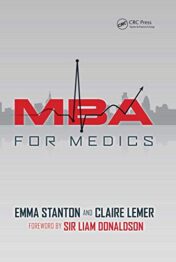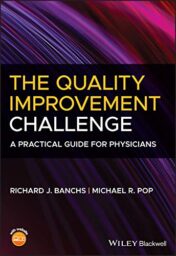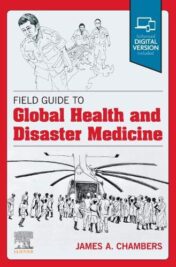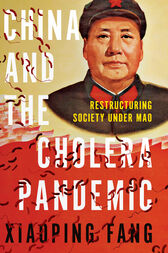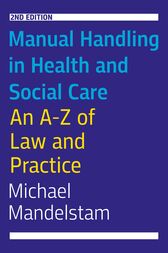Public Health Books
Public Health Books
Medicine Is War: The Martial Metaphor in Victorian Literature and Culture (Original PDF)
Public Health Books
The Quality Improvement Challenge: A Practical Guide for Physicians (Original PDF)
Public Health Books
Public Health Books
Field Guide to Global Health & Disaster Medicine (Original PDF)
Public Health Books
Public Health Books
Leading Ancillary and Support Departments to Higher Performance (Original PDF)
Public Health Books
Single Session Thinking and Practice in Global, Cultural, and Familial Contexts
Public Health Books
COVID-19: Current Challenges and Future Perspectives (Original PDF)
Public Health Books
Public Health Books
Public Health Books
Medications in Single-Dose Vials: Implications of Discarded Drugs (EPUB & Converted PDF)
Public Health Books
Public Health Books
Your Health Today: Choices in a Changing Society, 7th Edition (Original PDF)
Public Health Books
Medical Insurance: A Revenue Cycle Process Approach, 8th Edition (Original PDF)
Public Health Books
Computer-aided Design and Diagnosis Methods for Biomedical Applications (Original PDF)
Public Health Books
Manual Handling in Health and Social Care, Second Edition (Original PDF)
Public Health Books
Cases on Applied and Therapeutic Humor (EPUB & Converted PDF)
Public Health Books
Feminist Global Health Security (OXF STUDIES GENDER INTL RELATIONS SERIES)
Public Health Books
International Regimes in Global Health Governance (China Perspectives) (Original PDF)
Public Health Books
A Topical Approach to Lifespan Development, 9th Edition (Original PDF)
Public Health Books
International Practice Development in Health and Social Care, 2nd Edition (Original PDF)
Public Health Books
Management and Practice in Health and Human Service Organisations (Original PDF)
Public Health Books
Peer Research in Health and Social Development (Original PDF)
Introduction
Are you looking to enhance your knowledge of public health? Look no further than our list of the best public health books. From comprehensive guides to specialized topics, these books provide an in-depth look at the field of public health and its many facets. Whether you’re a student, professional, or just curious about the subject, these books will help you gain a better understanding of the issues facing public health today. With expert advice from leading authors, you’ll be able to stay up-to-date on the latest developments and trends in the field. So, if you’re ready to take your knowledge of public health to the next level, check out our list of the best public health books today!
Introduction to Public Health: A Comprehensive Guide to the Core Concepts
Introduction to Public Health: A Comprehensive Guide to the Core Concepts is an essential resource for anyone interested in learning about public health. This comprehensive guide provides a thorough overview of the core concepts and principles of public health, from epidemiology and biostatistics to environmental health and health policy. It covers the history and evolution of public health, as well as current trends and challenges.
The book begins with an introduction to the field of public health, including its definition, scope, and goals. It then moves on to discuss the various components of public health, such as epidemiology, biostatistics, health services administration, environmental health, and health policy. Each chapter includes detailed explanations of the topics covered, as well as case studies and examples to illustrate key points.
In addition to providing an overview of the core concepts of public health, this book also offers practical advice on how to apply these concepts in real-world settings. It discusses the importance of data collection and analysis, as well as strategies for developing effective public health interventions. The book also provides guidance on how to evaluate the effectiveness of public health programs and policies.
Overall, Introduction to Public Health: A Comprehensive Guide to the Core Concepts is an invaluable resource for anyone interested in learning more about public health. It provides a comprehensive overview of the field, as well as practical advice on how to apply the concepts in real-world settings. Whether you are a student, practitioner, or researcher, this book will provide you with the knowledge and skills necessary to understand and address public health issues.
Epidemiology and Biostatistics for Public Health Practice
Epidemiology and biostatistics are two of the most important disciplines in public health practice. They are used to identify, analyze, and prevent health problems in populations.
Epidemiology is the study of the distribution and determinants of health-related states or events in specified populations, and the application of this study to control health problems. It involves the collection and analysis of data on the frequency, patterns, and causes of disease and other health-related conditions in defined populations. Epidemiologists use a variety of methods to collect and analyze data, including surveys, interviews, laboratory tests, and medical records. The information they gather helps them understand how diseases spread, who is at risk for certain diseases, and what can be done to prevent them.
Biostatistics is the application of statistical methods to the study of biological phenomena. It is used to design experiments, analyze data, and interpret results. Biostatisticians use mathematical models to describe and predict the behavior of biological systems. They also develop new methods for analyzing data and interpreting results.
Together, epidemiology and biostatistics provide public health practitioners with the tools they need to identify, analyze, and prevent health problems in populations. They help public health professionals understand the causes of disease, identify risk factors, and develop strategies for prevention and control. By using these disciplines, public health practitioners can make informed decisions about how to best protect the health of their communities.
Global Health: An Interdisciplinary Approach
Global health is an interdisciplinary approach to addressing the health needs of people around the world. It involves a wide range of disciplines, including public health, medicine, epidemiology, economics, sociology, anthropology, and political science. Global health focuses on understanding the causes of health disparities between countries and regions, as well as developing strategies to reduce them.
The goal of global health is to improve the health of all people, regardless of their location or economic status. This includes reducing the burden of disease, improving access to healthcare, and promoting healthy lifestyles. To achieve these goals, global health practitioners must consider the social, economic, and environmental factors that influence health outcomes.
Global health practitioners use a variety of approaches to address health issues. These include research, policy development, advocacy, and direct service delivery. Research is used to identify the root causes of health disparities and develop evidence-based interventions. Policy development involves creating laws and regulations that promote health and protect vulnerable populations. Advocacy involves raising awareness about health issues and advocating for change. Direct service delivery involves providing healthcare services to those in need.
Global health practitioners also work to strengthen health systems in low- and middle-income countries. This includes improving access to healthcare, increasing the availability of essential medicines, and training healthcare workers. Additionally, global health practitioners strive to ensure that health systems are equitable and accessible to all.
Global health is an important field of study that has the potential to improve the lives of millions of people around the world. By taking an interdisciplinary approach, global health practitioners can develop effective strategies to reduce health disparities and improve the health of all people.
Public Health Law: Power, Duty, Restraint
Public Health Law: Power, Duty, Restraint is a comprehensive guide to the legal and ethical issues surrounding public health. It provides an overview of the legal framework governing public health, including the roles of government, private entities, and individuals in protecting the public’s health. The book examines the power of public health law to protect the public from disease and injury, as well as its duty to respect individual rights and liberties. It also explores the limits of public health law, including the need for restraint when balancing public health interests with individual rights.
The book begins by discussing the history of public health law and its evolution over time. It then examines the various sources of public health law, including constitutional law, statutory law, administrative law, and common law. It also looks at the role of the courts in interpreting and enforcing public health laws.
The book then turns to the core principles of public health law, including the prevention of disease and injury, the promotion of health, and the protection of individual rights. It discusses the various tools available to public health officials, such as regulation, education, and surveillance. It also examines the ethical considerations that must be taken into account when making public health decisions.
The book then looks at the various challenges faced by public health officials, including the need to balance public health interests with individual rights. It examines the tension between public health and civil liberties, as well as the need to ensure that public health measures are effective and equitable. Finally, it considers the implications of public health law for global health.
Overall, Public Health Law: Power, Duty, Restraint provides a comprehensive overview of the legal and ethical issues surrounding public health. It is an invaluable resource for anyone interested in understanding the legal framework governing public health and the ethical considerations that must be taken into account when making public health decisions.
The Social Determinants of Health: A Primer for Public Health Professionals
The Social Determinants of Health (SDOH) are the conditions in which people are born, grow, live, work, and age. These conditions are shaped by the distribution of money, power, and resources at global, national, and local levels. SDOH are responsible for health inequities—the unfair and avoidable differences in health status seen within and between countries.
Public health professionals play a critical role in addressing SDOH. They must understand the underlying causes of health inequities and how they interact with each other to create disparities in health outcomes. This understanding is essential for developing effective public health interventions that address the root causes of health inequities.
The Social Determinants of Health: A Primer for Public Health Professionals provides an overview of the key concepts related to SDOH and their implications for public health practice. It begins by defining SDOH and discussing the various factors that contribute to health inequities. It then examines the evidence linking SDOH to health outcomes and explores the ways in which public health professionals can use this evidence to inform their practice.
The primer also provides an overview of the strategies used to address SDOH, including policy and programmatic interventions. It discusses the importance of collaboration among different sectors and stakeholders in order to effectively address SDOH. Finally, it outlines the challenges associated with implementing SDOH interventions and suggests ways to overcome these challenges.
The Social Determinants of Health: A Primer for Public Health Professionals is an invaluable resource for public health professionals who are looking to better understand the complex relationships between SDOH and health outcomes. By providing an overview of the key concepts related to SDOH and their implications for public health practice, this primer will help public health professionals develop effective interventions that address the root causes of health inequities.
Conclusion
In conclusion, public health books are a great way to enhance your knowledge and understanding of the field. From textbooks to handbooks, there is a wide range of books available to help you learn more about public health. Whether you’re looking for an introduction to the field or a comprehensive guide to the latest research, there is a book out there that can help you become an expert in public health. With the right resources, you can gain the knowledge and skills necessary to make a positive impact on the health of your community.

